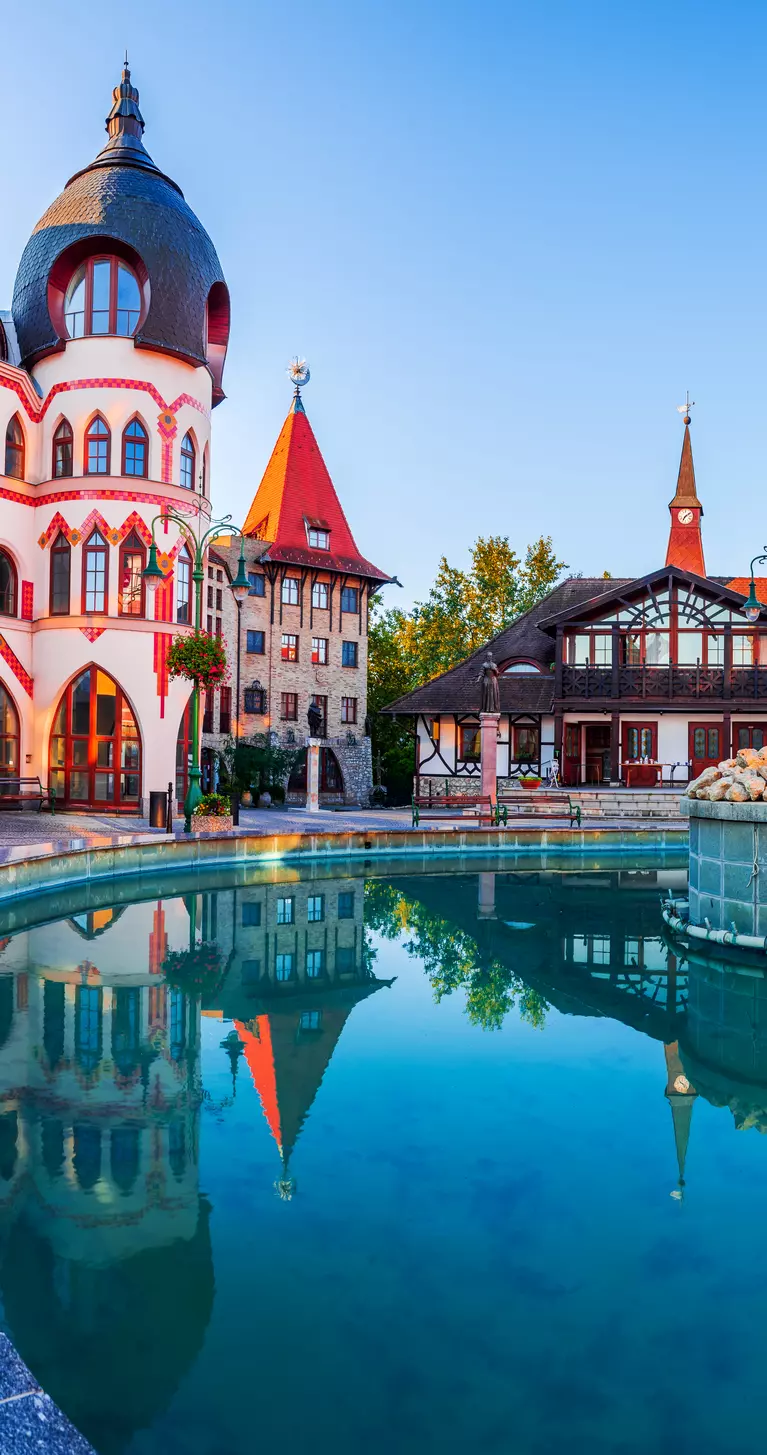US and Canadian citizens can enter Slovakia visa-free for up to 90 days within a 180-day period as it’s part of the Schengen Area. Your passport must be valid for at least three months beyond your planned departure. If you plan to work, study, or stay longer, you’ll need to apply for the proper visa before travelling. Always confirm current entry rules before your trip.
Discover Tailor-Made Slovakia Vacations
Discover Slovakia’s castles, mountains, and medieval towns in the heart of Europe.
Slovakia offers travellers a journey through fairytale castles, snow-capped mountains, and medieval towns rich in history. From the Tatras to Bratislava, you’ll find hiking, thermal spas, and centuries-old traditions set against a backdrop of natural beauty.
Featured Highlights
- Hike and ski in the dramatic High Tatras mountains
- Explore medieval towns with Gothic and Baroque charm
- Visit Spiš Castle, one of Europe’s largest fortresses
- Relax in natural mineral springs and thermal spas
- Wander Bratislava’s lively streets and Danube views
- Experience authentic Slovak culture and hearty cuisine
What do Goway's travellers say?

Get to know Slovakia before you go.
Best Time to Visit
Slovakia offers travellers a land of shifting seasons, each bringing its own kind of adventure.
Summer invites you to hike through wildflower meadows and alpine valleys, while winter transforms the mountains into snowy playgrounds with skiing and Christmas markets. Spring and autumn reveal colourful landscapes, making every visit feel distinct and memorable.
The country is home to nine national parks and countless reserves where nature thrives. Slovak Paradise National Park is particularly captivating, with its waterfalls, ravines, and canyons carved by streams over thousands of years. Its 300 kilometres of trails use ladders, chains, and bridges, creating a sense of exploration at every turn. Within the park, the UNESCO-listed Dobsinska Ice Cave reveals surreal frozen formations and is one of the most visited underground attractions in Slovakia.
In the High Tatras, Velky Sokol rises among jagged peaks and sweeping valleys, offering trails alive with alpine flowers, marmots, and birds. Wildlife encounters may include lynx, bears, or the endangered saker falcon. The region’s thundering waterfalls and snowfields add to its untamed beauty, making it an unforgettable place for hikers and climbers.
Slovakia’s culture and history are just as rich as its landscapes. Spa towns built on mineral and thermal springs offer a slower rhythm of travel, while medieval cities tell stories of wealth and craftsmanship. Kremnica, with its mint in continuous operation since 1328, reflects the country’s long heritage of gold and silver mining. With its castles, UNESCO sites, and vibrant traditions, Slovakia blends nature, history, and culture in a way that feels both timeless and alive.
Frequently Asked Questions
Do I need a visa or special permits to enter Slovakia?
What language is spoken locally? How widely is English understood in Slovakia?
Slovak is the official language. English is increasingly spoken in major cities like Bratislava and Košice, especially by younger people and those in tourism. In smaller towns or rural regions, you may find English less common, but locals are friendly and often willing to communicate with gestures or translation apps.
What are the must-see attractions in Slovakia?
Start in Bratislava, where the hilltop castle overlooks the Danube and pastel streets wind through the Old Town. Beyond the capital, explore the High Tatras for alpine hikes, glacial lakes, and mountain lodges. Spiš Castle, one of Europe’s largest, offers sweeping views and a taste of medieval history. The fairytale town of Banská Štiavnica charms with its mining heritage, while the Demänovská Cave system reveals glowing ice formations and crystal caverns.
Is Slovakia safe? What should I keep in mind while travelling there?
Slovakia is a very safe destination. Petty crime is rare but can occur in crowded areas or on public transport—just stay aware of your belongings. Roads are generally well maintained, though mountain routes can be winding. Tap water is safe to drink, and public transport is dependable and clean.
What's the best way to travel within Slovakia?
Trains and buses connect most towns efficiently and affordably. The journey from Bratislava to Košice by train takes about five hours. For exploring the Tatra Mountains or smaller villages, renting a car gives more flexibility. Cycling is also popular, with well-marked routes in scenic areas like the Little Carpathians and Liptov region.
What Slovak cultural customs should I be aware of?
Slovaks are polite and somewhat reserved at first but warm once you connect. A firm handshake is the typical greeting. It’s customary to remove your shoes when entering a home and to bring a small gift if invited for a meal. Toasts with local spirits are common—wait for the host to raise their glass before drinking. Respect for traditions and nature runs deep, so avoid loud behaviour in public or natural spaces.
What should I wear/pack for Slovakia’s climate?
Slovakia has a continental climate with warm summers and cold winters. In summer (June–August), pack light clothing, a sweater for cooler evenings, and a rain jacket. Autumn and spring can be mild but unpredictable, so layers are best. Winters, especially in the Tatras, can be snowy and cold—bring warm coats, boots, and gloves. Comfortable walking shoes are essential year-round for exploring towns and trails.
Unlock more by subscribing to our newsletter
With our newsletter, you’ll get access to regular communications that inspire you and help you explore the world your way